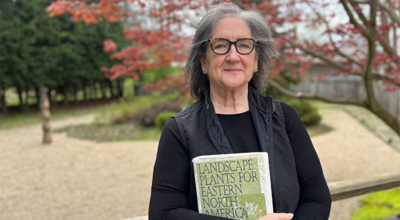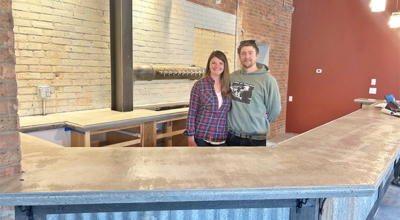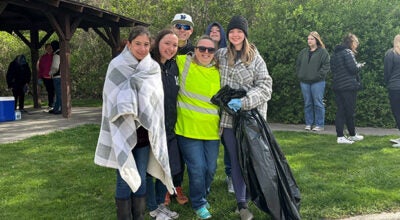Francis J. Plym was once knighted by Sweden’s king
Published 12:58 am Saturday, October 17, 2009

The Plym family plot in Silverbrook Cemetery. (Daily Star photo/Provided)
Part of a continuing series on Niles’ historic Silverbrook Cemetery, provided by Friends of Silverbrook Cemetery, a group working to preserve and restore the cemetery.
By Friends of Silverbrook Cemetery
What do King Gustav of Sweden, plate glass windows, Kansas City, Berkley and the Niles Daily Star have in common? The answer is the Knight of Silverbrook Cemetery: Francis J. Plym.
Plym was born in Sweden on Sept. 16, 1869. When he was two years old his family came to the United States where his father continued working his trade of cabinet making.
As was often the case, Plym appeared to have been following in his father’s footsteps, working as a skilled carpenter, that is, until he visited the Chicago World’s Columbian Exposition in 1893. One can only imagine the wide-eyed young man, with a sixth grade education making his way through the exhibits of new and expanding technology of the historic fair.
It is nearly impossible for children today to imagine the world without huge factories and computers in every classroom and yet this was the dawn of the industrial age.
Young Plym wanted to be a part of it all.
With only a few years of normal schooling, he completed his college entrance requirements in only one year and entered the University of Illinois’ College of Engineering obtaining his degree in architecture in 1897.
Leaving his initial practice in Lincoln, Neb to attend a post-graduate course at the National Academy of Design in New York, he eventually settled in Kansas City, Mo., in 1903 and was appointed City Architect in 1906.
While in Kansas City, Plym invented a new design for framing plate glass windows.
Until this time, many such windows were framed in wood influenced by the forces of contraction, expansion and condensation that could cause the wood to rot around the large panes of glass which would then crack. Those that were framed in metal were subject to rust.
Working with Henry Weis, owner of a sheet metal shop in Kansas City, Plym developed frames made with heavy rolled copper. He was awarded the patent for the new resilient metal framing for glass in May 15, 1906.
Some reports credit his wife, Jennie, for the suggestion that Plym’s company, born of this first patent, be named after one of Kansas City’s two rivers. Others suggest it was Plym, who thought of the hard work down near the Kaw River. Whatever the impetus, this was birth of Kawneer, a historic American company which celebrated its 100th anniversary in March 2006 and has been awarded over 400 patents with more pending.
At the time of his death in 1940, his obituary stated that “…Niles, Michigan, once known as Ring Lardner’s home town, offered them (Plym and partner, Frank Johnson, a merchant and friend from Holdrege, Neb.) a building for an expanded plant and the factory was moved there.
“When the business was moved to Michigan, Mr. Plym’s plant equipment and household furniture would not fill a box car.”
Today Kawneer, which left Niles in the 1970s, boasts of six major facilities in the United States and two in Canada with another 14 US service centers and two more in Canada.
In Niles, Plym became known not only as an astute businessman, but an extremely generous philanthropist.
To the University that gave him the education he applied to his career, he donated three scholarships which are still awarded today. The Francis J. Plym Graduate Fellowships provide a stipend plus waivers of tuition and most fees to encourage and recognize outstanding work in the University of Illinois’ Master of Architecture program. The Francis J. Plym Travelling Fellowship in Architecture was established by the 1897 grad to allow the study of architecture in foreign countries. The Plym Foundation also maintains a fellowship awarded to doctoral candidates in the field of architecture.
This good fellow was responsible for many civic projects within the city of Niles.
He purchased this paper, The Niles Daily Star in the 1920s to be operated by his son Lawrence J. (Larry) Plym and grandson, Eric Plym, until the early 1970s.
Plym and his wife donated their wonderful home, Castle Rest, by the river to be the town’s hospital, Pawating. He also built a public park and donated it to the city. Plym Park is still enjoyed by area residents.
The St. Joseph Museum originated in The Niles Daily Star building in a space donated by the Plyms. It opened in March of 1932 and remained there until moving to the current location in the carriage house of Chapin House, the city’s municipal offices. The grand opening of the new facility was held Oct. 14-16, 1939. One of the exhibits at the museum was the F.J. Plym Sioux Indian Collection.
The family frequently gave large sums of money to other civic projects as well.
In 1938, Plym was chosen as president and national campaign chairman of the Swedish-American Tercentenary Committee. He donated $25,000 to that fund which provided $750,000 to enable the American Swedish Historical Museum in Philadelphia to carry on its work of preserving the records of notable contributions of other Swedes to the development of the United States.
He also donated a sum of money for the establishment of a home for the elderly in Sweden. It was for his work on the Tercentenary Committee that he was knighted by King Gustav of Sweden.
The man certainly left his mark. An essay marking Plym’s contribution to Berkley at www.berkleyheritage.com tells of how San Francisco was “devastated by the great earthquake and fire. As the city was pulling itself from the rubble, Kawneer salesmen found a ready market. The San Francisco that rose from the ashes had altered to such an extent that a friend of Plym’s wrote to say that Market Street ought to be renamed Kawneer Street.”
It goes on to tell of how the Berkley plant thrived as Plym’s inventions found additional applications in automobile, aircraft and refrigerator parts.
“By the time of his death in 1940, Plym saw his ideas changing commercial design around the world.”
Here in Niles, life would have been very different and indeed the very landscape of the city would be much different if Plym with equipment and household furniture, that would not fill a box car, had moved anywhere else. Here he was indeed a knight of honor.
For more information on Friends of Silverbrook with regards to memberships and work days to help restore and catalog the monuments contact: Friends of Silverbrook Cemetery c/o 508 E. Main St. Niles MI 49120, Tim and Candace Skalla at 684-2455, wskalla@sbcglobal.net or contact Ginny Tyler at 445-0997, SPHINX1974@aol.com.






